Francis Kéré’s education campus in Kenya is inspired by termites
Francis Kéré’s perfectly ventilated, termite-inspired Kenyan education campus, SLAK, is a breath of fresh air by Lake Turkana
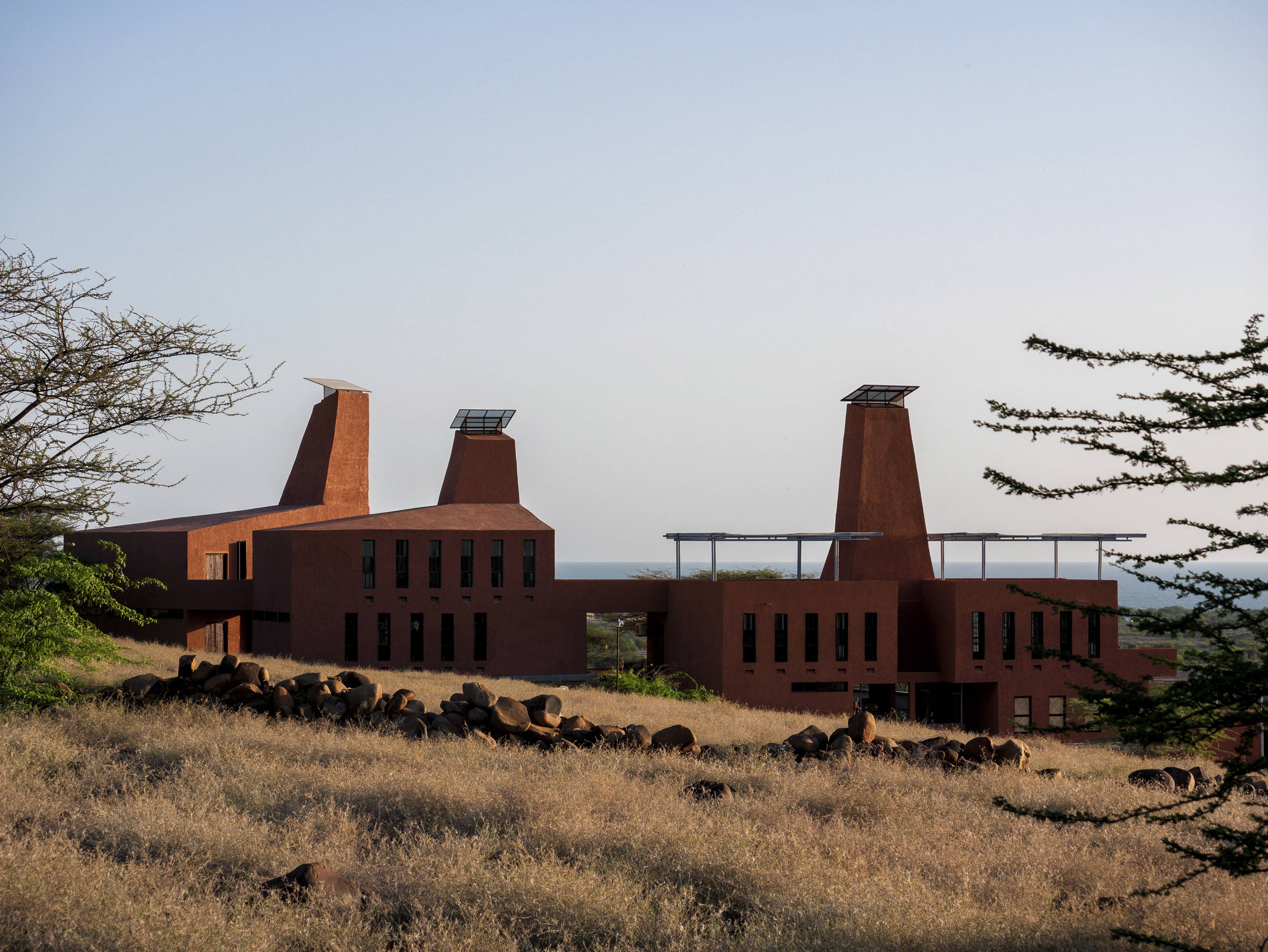
Kéré Architecture - Photography
Turkana County in Kenya is a large expanse of beautiful yet arid land of low bushes and occasional trees, home to Lake Turkana, the country’s largest landlocked body of water and the biggest desert lake in the world. Termite mounds, buzzing with activity and up to several metres high, are dotted around the region’s gently undulating landscape. It was these tall structures that first caught the eye of Berlin-based architect Francis Kéré when he started researching the area for one of his latest commissions – a sustainable education campus on the lake’s banks.
In 2019, Kéré was in Munich for the Global Africa Forum organised by the city’s Technical University. There, he met Ludwig Bayern, founder and CEO of Learning Lions, a non-profit organisation that works to empower young adults in impoverished rural areas of Eastern Africa. Together, the pair decided to build a school by Lake Turkana – a higher education facility that would offer valuable IT knowledge to the county’s youth. This part of Kenya offers immense natural beauty, but it is also the country’s poorest region, with high unemployment rates. ‘The NGO wanted to support development in the area, to create opportunities,’ says Kéré. ‘It wanted to give the area a boost and the people a better future.’ The project was named Startup Lions Assets Kenya (SLAK).
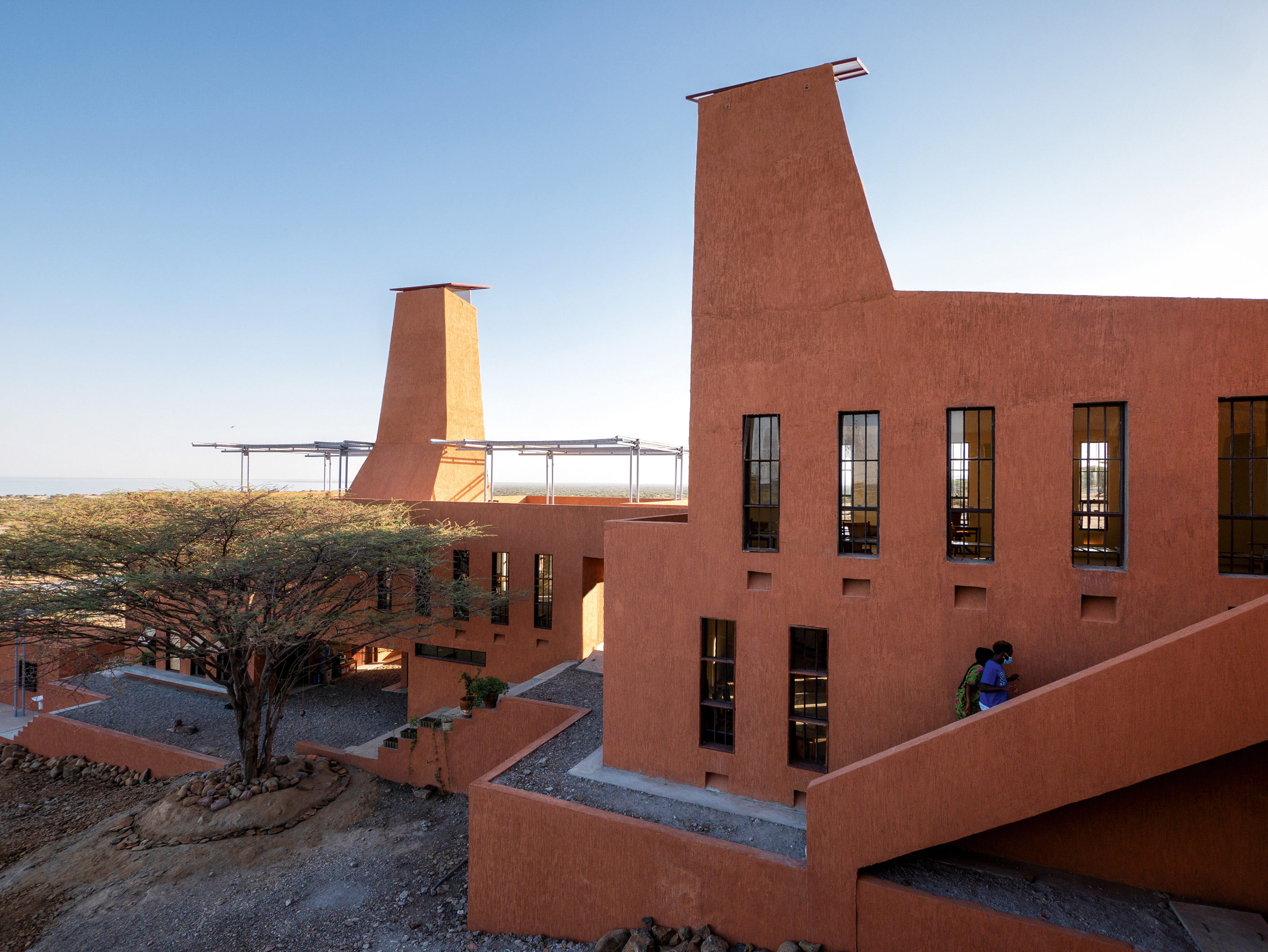
The architect, who first gained widespread acclaim a decade ago for a series of school projects in his native Burkina Faso, is known for a site-specific and inventive approach that is particularly sensitive to the needs of local communities. Today, he runs an 18-strong and extremely busy studio in Berlin. Projects span London, Montana and Kenya, while a new National Assembly for Benin is in the works. ‘Every project is different,’ says Kéré. ‘Material availability is important to me, and local traditions and handcraft, too; you also have the climate as a factor. But I’d say a common thread in my work is finding a way to create the most comfort for the people living there. And if possible, I always try to use renewable, local materials rather than very expensive materials.’
For this design, he looked at the local nature and building vernacular, aiming to create an architecture that not only looks and feels stylistically at home in its environment, but is also respectful and operates in harmony with it, too. Turkana’s climate can be hot and harsh, so ventilation and temperature management were key concerns. Traditional local housing is very simple, made of straw. Inspiration came from the area’s termites. ‘Nature is the best architect,’ says Kéré. ‘I wanted to learn from termite mounds and design something that provides passive ventilation. So we studied the mounds and came to a shape that does that and is really visible, and becomes part of the architecture. The complex has these sort of wind towers.’
Indeed, the first indication of a man-made structure on the site as you approach is the three towers. Celebrating the local context, these elements support natural ventilation ‘by extracting warm air upwards, while fresh air is introduced through specially designed low-level openings’, says Kéré. Electricity is produced on site, using solar panels.
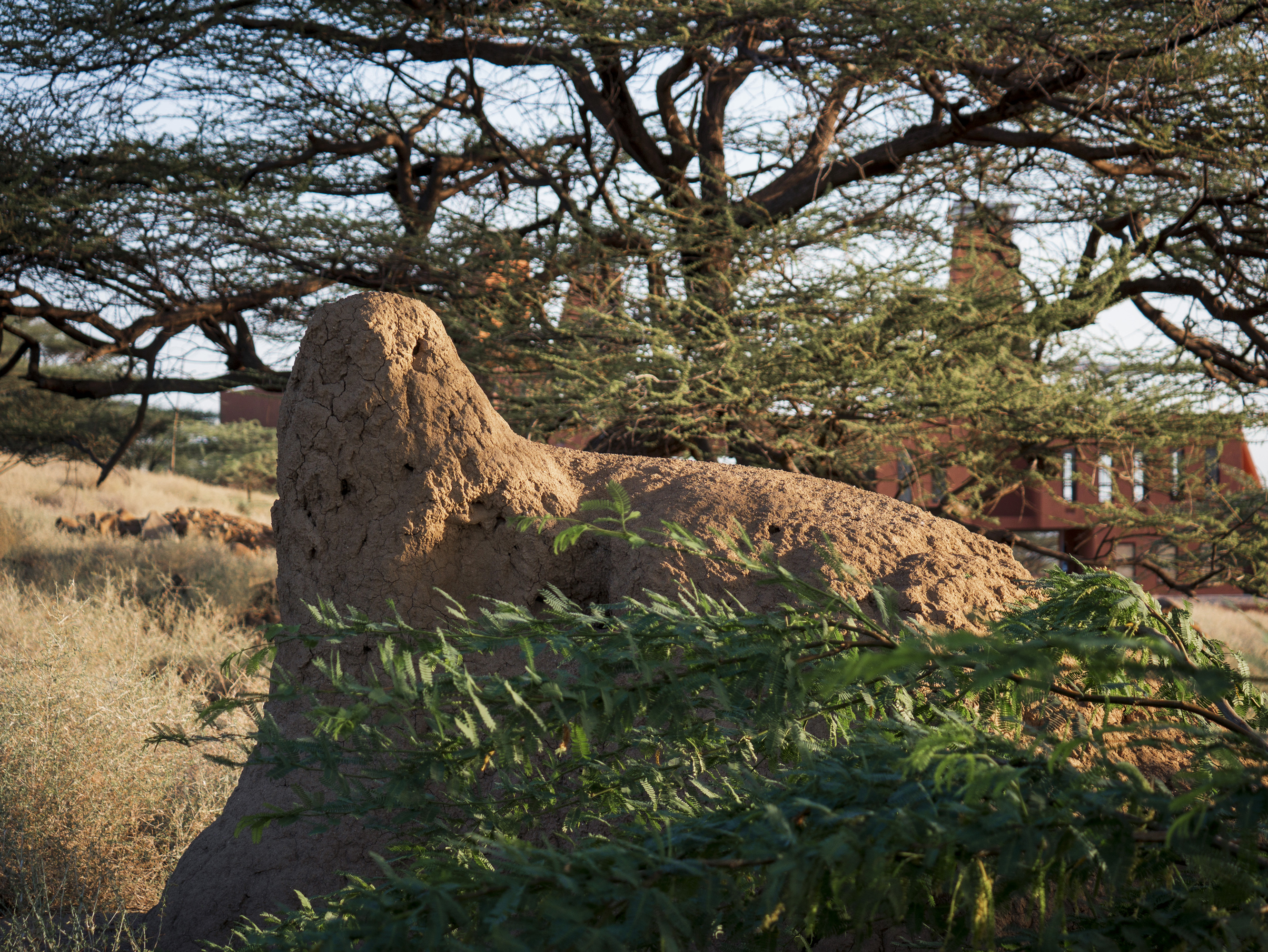
The hillside campus, which focuses on information and communication technologies, is a composition of five main buildings spanning two levels and made of local quarry rocks finished with concrete plaster to aid with insulation and keep the interiors cool. The cluster is arranged in a circular shape, around a clearing that allows students to gather. Various shaded terraces, covered by planted pergolas, offer options for teaching outdoors. Wide steps connect the various parts, also providing impromptu seating for large and small groups. Inside, the buildings house classrooms and flexible workshops, but also storage and technical facilities. The metal and wooden window frames feature woven straw shades, in the traditional mkeka style, which can be adjusted depending on the sun’s position. Mosquito nets keep insects at bay while air flow remains continuous. All labour was local and all elements were made on site.
A second phase is currently in the works and includes housing (by a different practice) for the staff, volunteers and students who board. Creating a restaurant on site is also part of the plan. This is just the first step in what both Kéré and his client are hoping becomes a network of similar hubs in remote areas. ‘The political power behind the project is subtle but strong,’ says Kéré, who also recently completed the RTL Kinderhaus for the Sauti Kuu Foundation, and has finalised designs for the Mama Sarah Obama Legacy Campus, both in Kogelo, western Kenya. ‘Give the people a laptop and instruct them, and see what they can do.’
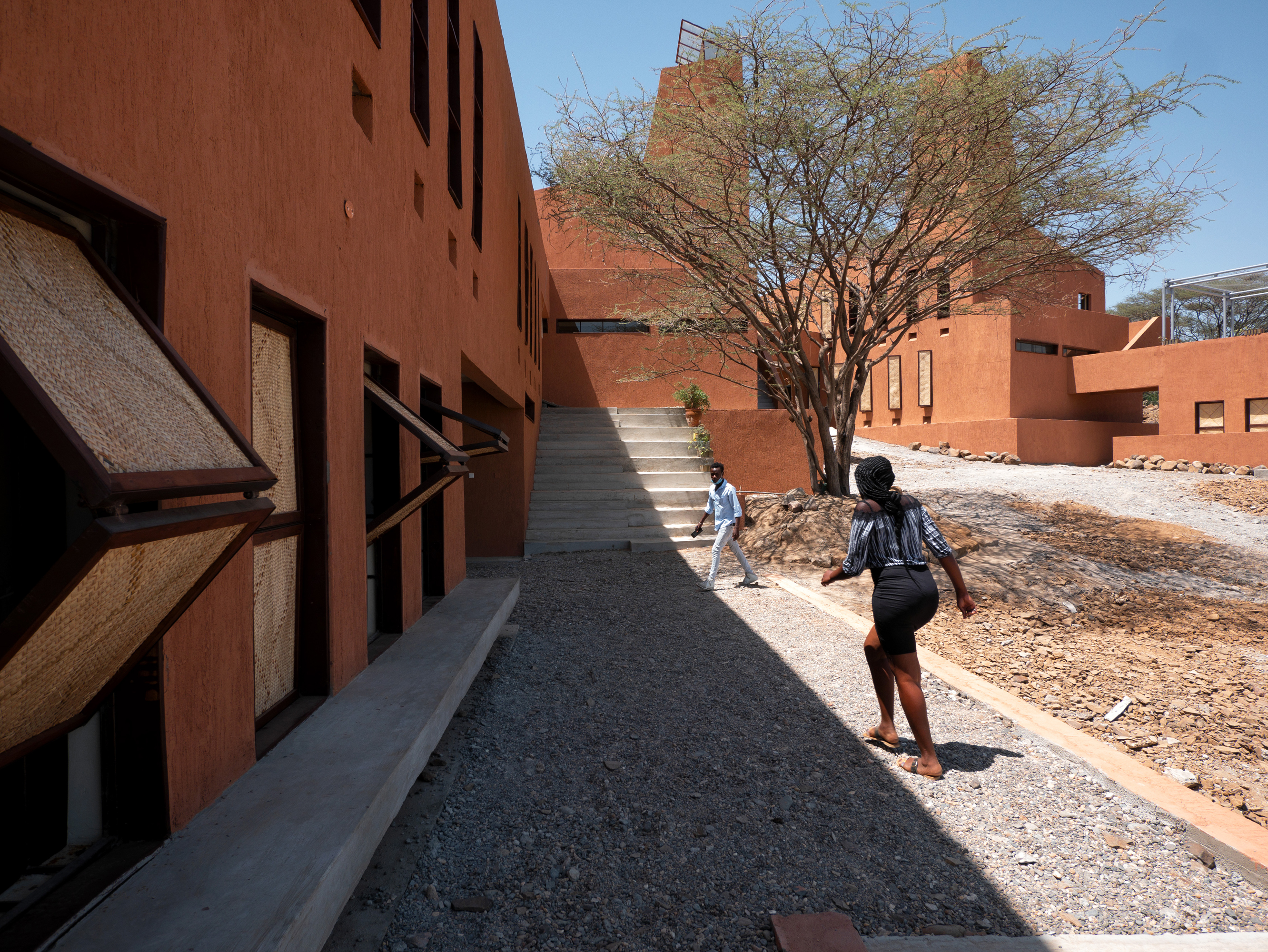
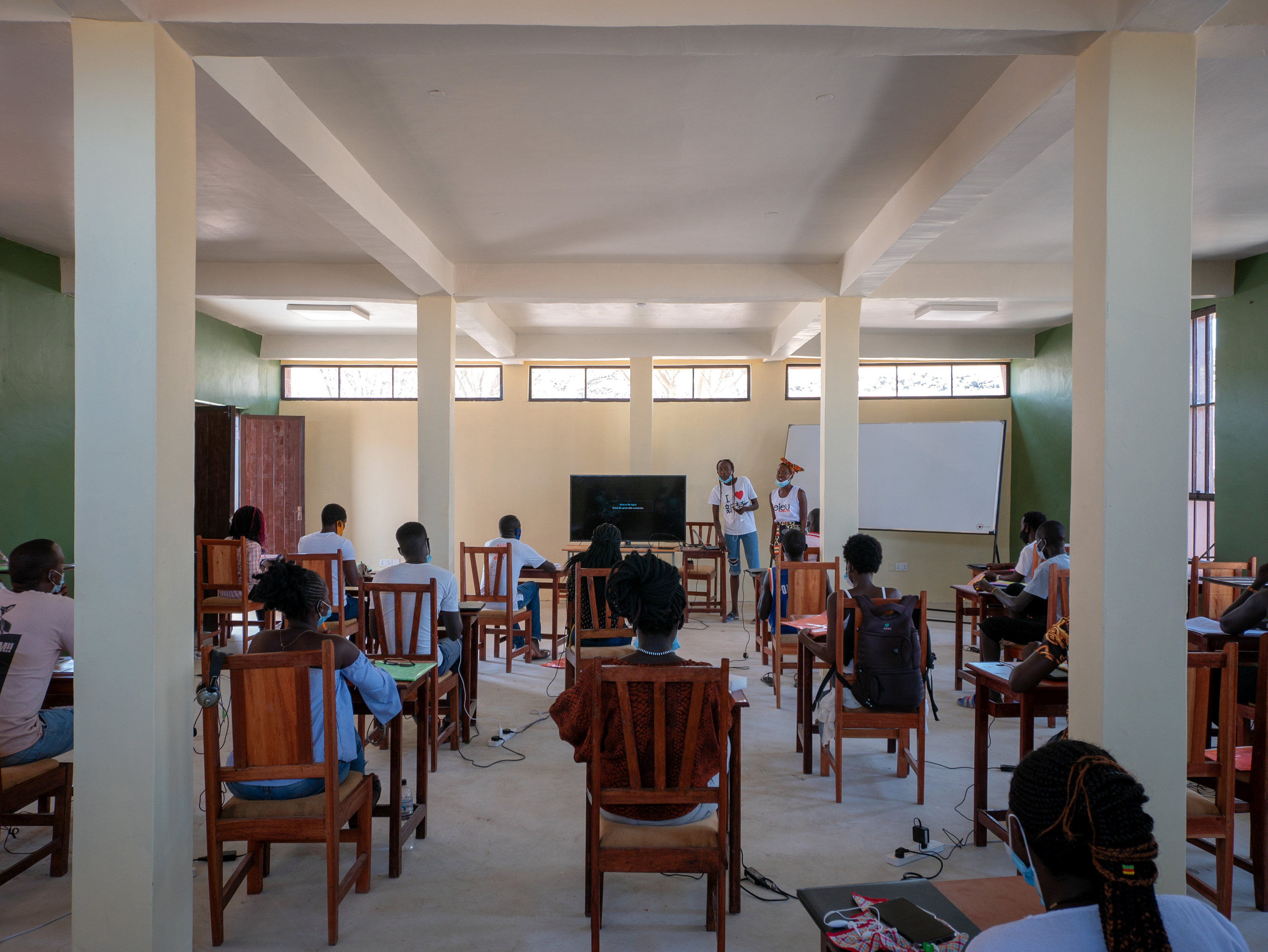
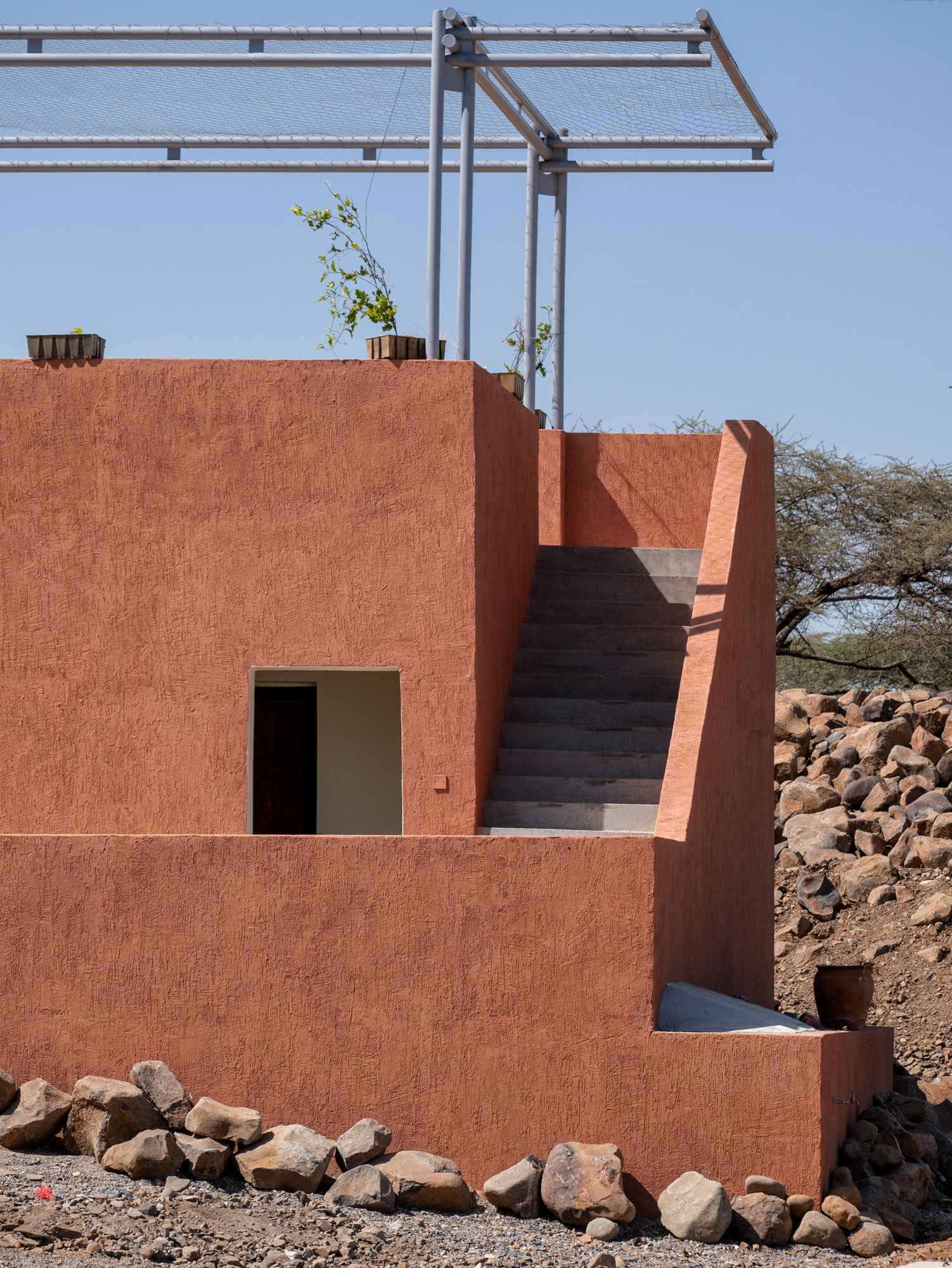
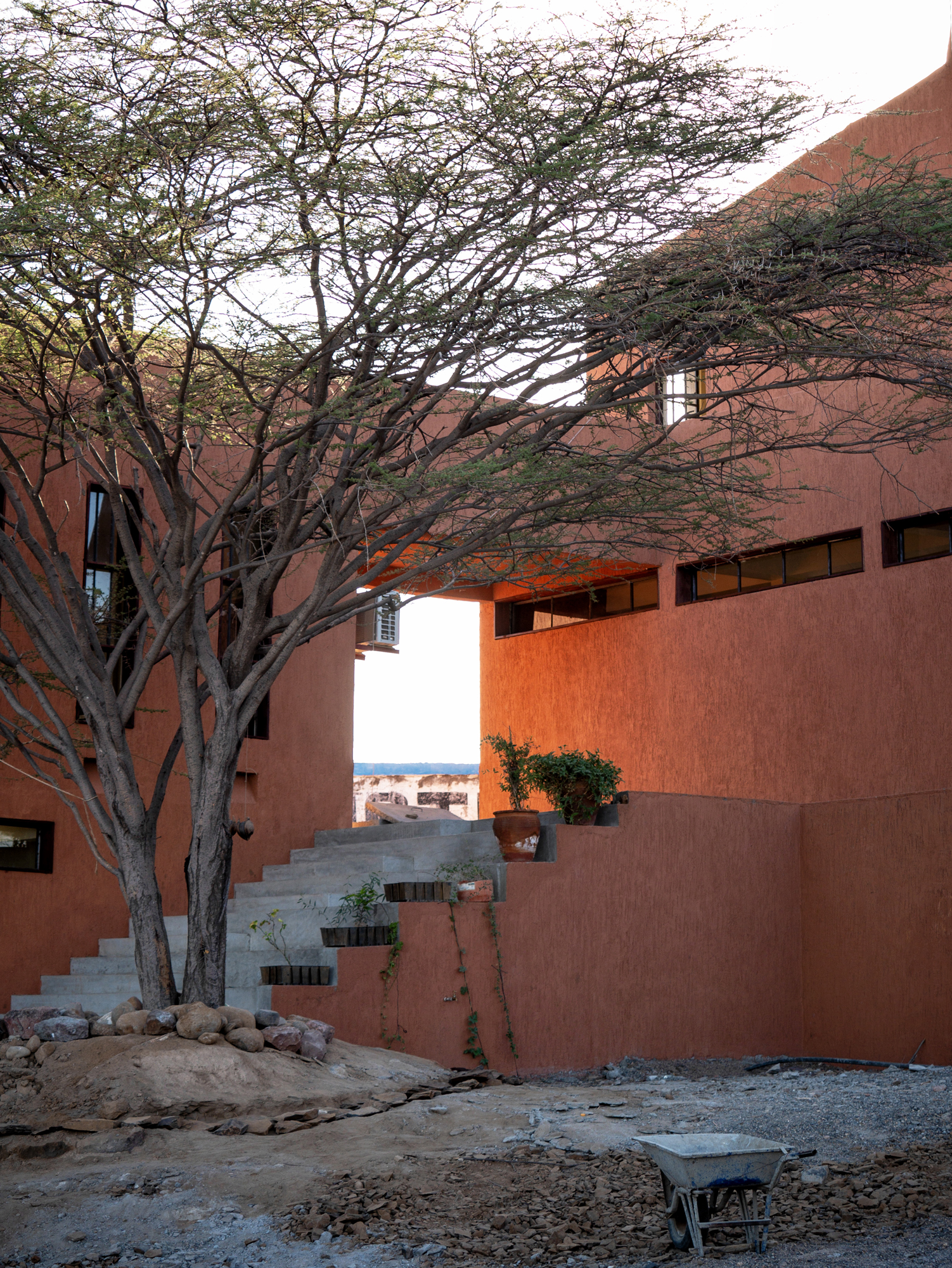
INFORMATION
Wallpaper* Newsletter
Receive our daily digest of inspiration, escapism and design stories from around the world direct to your inbox.
Ellie Stathaki is the Architecture & Environment Director at Wallpaper*. She trained as an architect at the Aristotle University of Thessaloniki in Greece and studied architectural history at the Bartlett in London. Now an established journalist, she has been a member of the Wallpaper* team since 2006, visiting buildings across the globe and interviewing leading architects such as Tadao Ando and Rem Koolhaas. Ellie has also taken part in judging panels, moderated events, curated shows and contributed in books, such as The Contemporary House (Thames & Hudson, 2018), Glenn Sestig Architecture Diary (2020) and House London (2022).
-
 All-In is the Paris-based label making full-force fashion for main character dressing
All-In is the Paris-based label making full-force fashion for main character dressingPart of our monthly Uprising series, Wallpaper* meets Benjamin Barron and Bror August Vestbø of All-In, the LVMH Prize-nominated label which bases its collections on a riotous cast of characters – real and imagined
By Orla Brennan
-
 Maserati joins forces with Giorgetti for a turbo-charged relationship
Maserati joins forces with Giorgetti for a turbo-charged relationshipAnnouncing their marriage during Milan Design Week, the brands unveiled a collection, a car and a long term commitment
By Hugo Macdonald
-
 Through an innovative new training program, Poltrona Frau aims to safeguard Italian craft
Through an innovative new training program, Poltrona Frau aims to safeguard Italian craftThe heritage furniture manufacturer is training a new generation of leather artisans
By Cristina Kiran Piotti
-
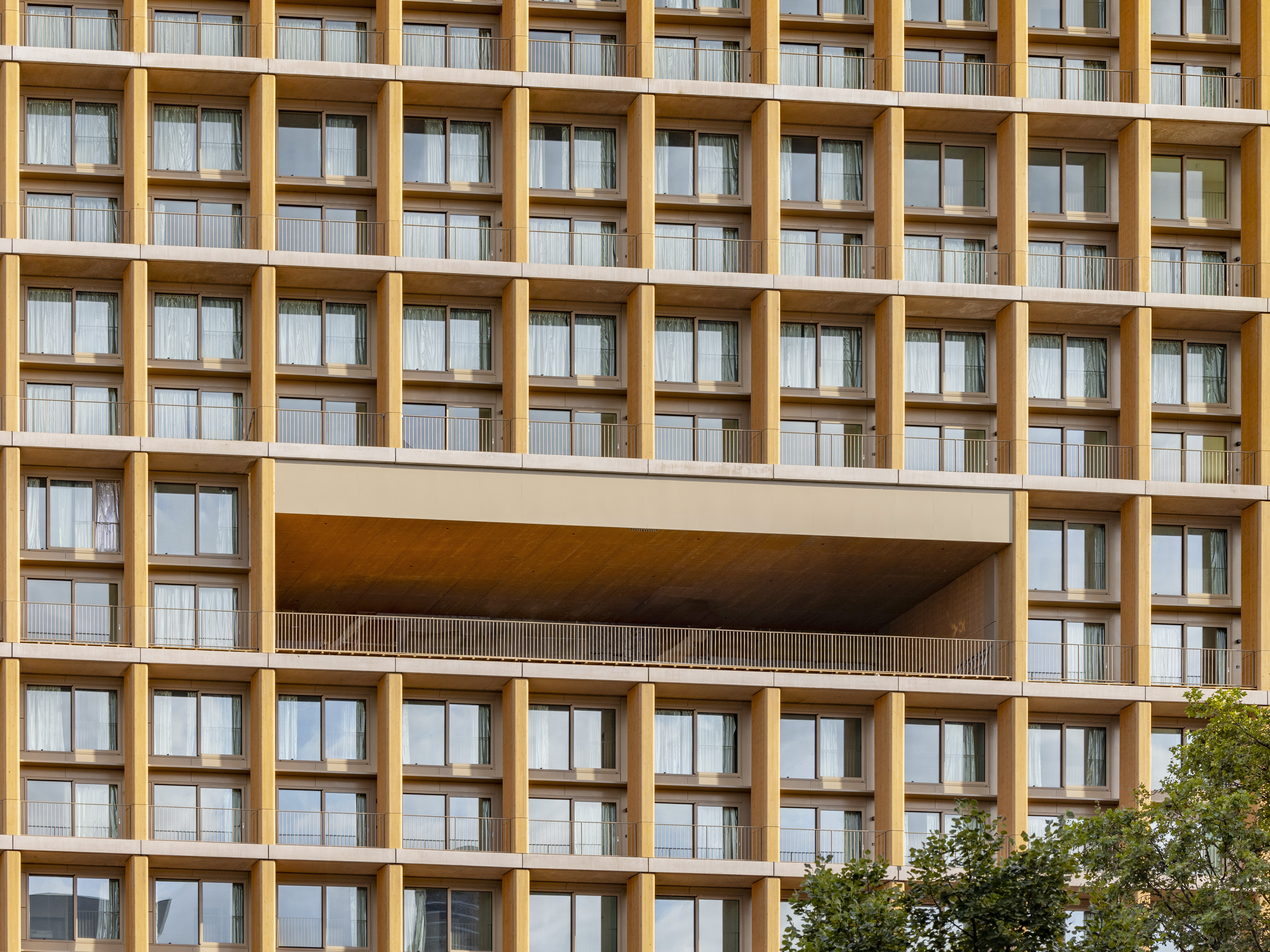 Explore wood architecture, Paris' new timber tower and how to make sustainable construction look ‘iconic’
Explore wood architecture, Paris' new timber tower and how to make sustainable construction look ‘iconic’A new timber tower brings wood architecture into sharp focus in Paris and highlights ways to craft buildings that are both sustainable and look great: we spoke to project architects LAN, and explore the genre through further examples
By Amy Serafin
-
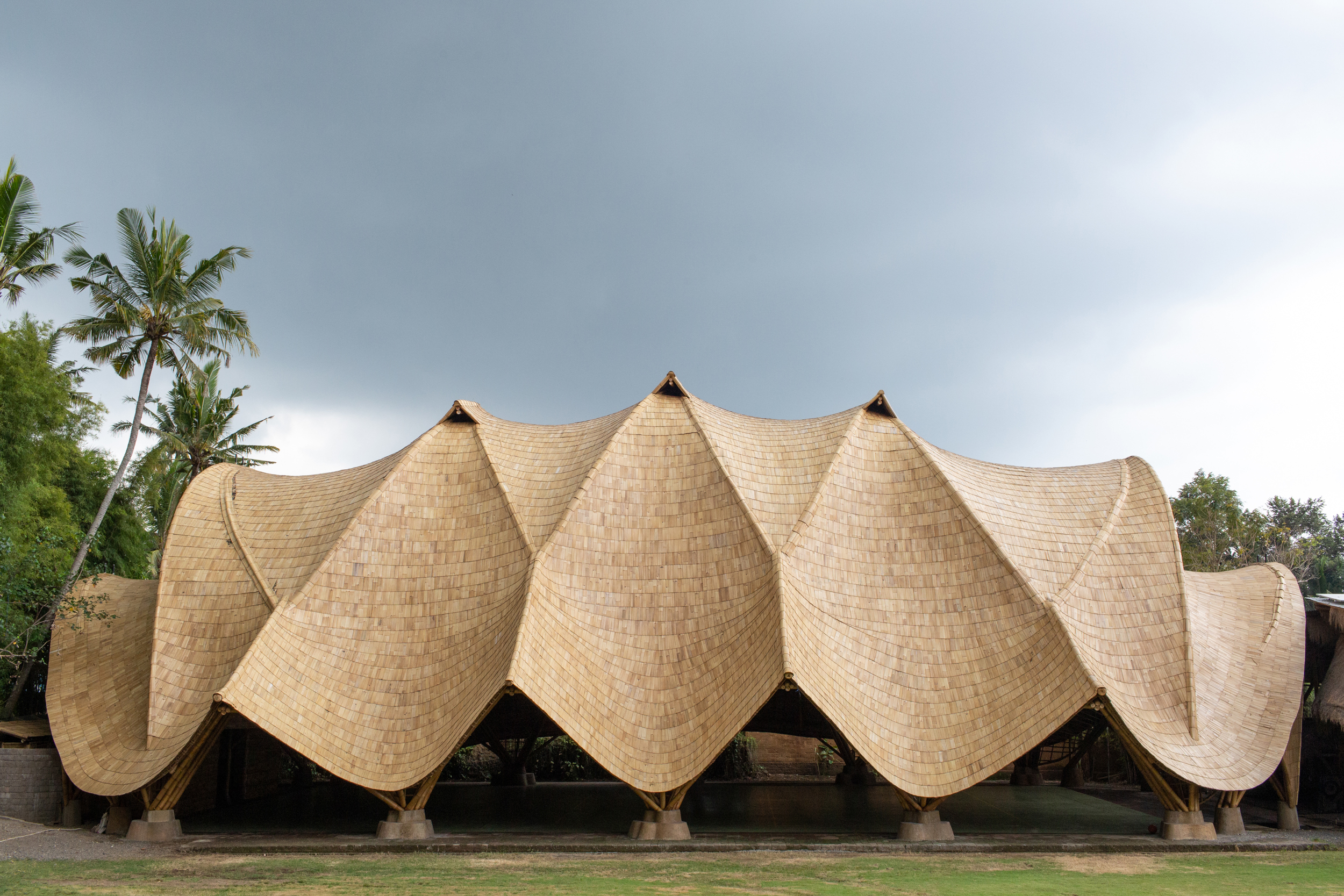 Building with bamboo: In Bali, designer, Elora Hardy, shares her tips and experience
Building with bamboo: In Bali, designer, Elora Hardy, shares her tips and experienceBamboo architecture can be powerful and sustainable; here, we talk to Ibuku's Elora Hardy, who shares her tips, thoughts and experience in working with the material in Bali
By Ellie Stathaki
-
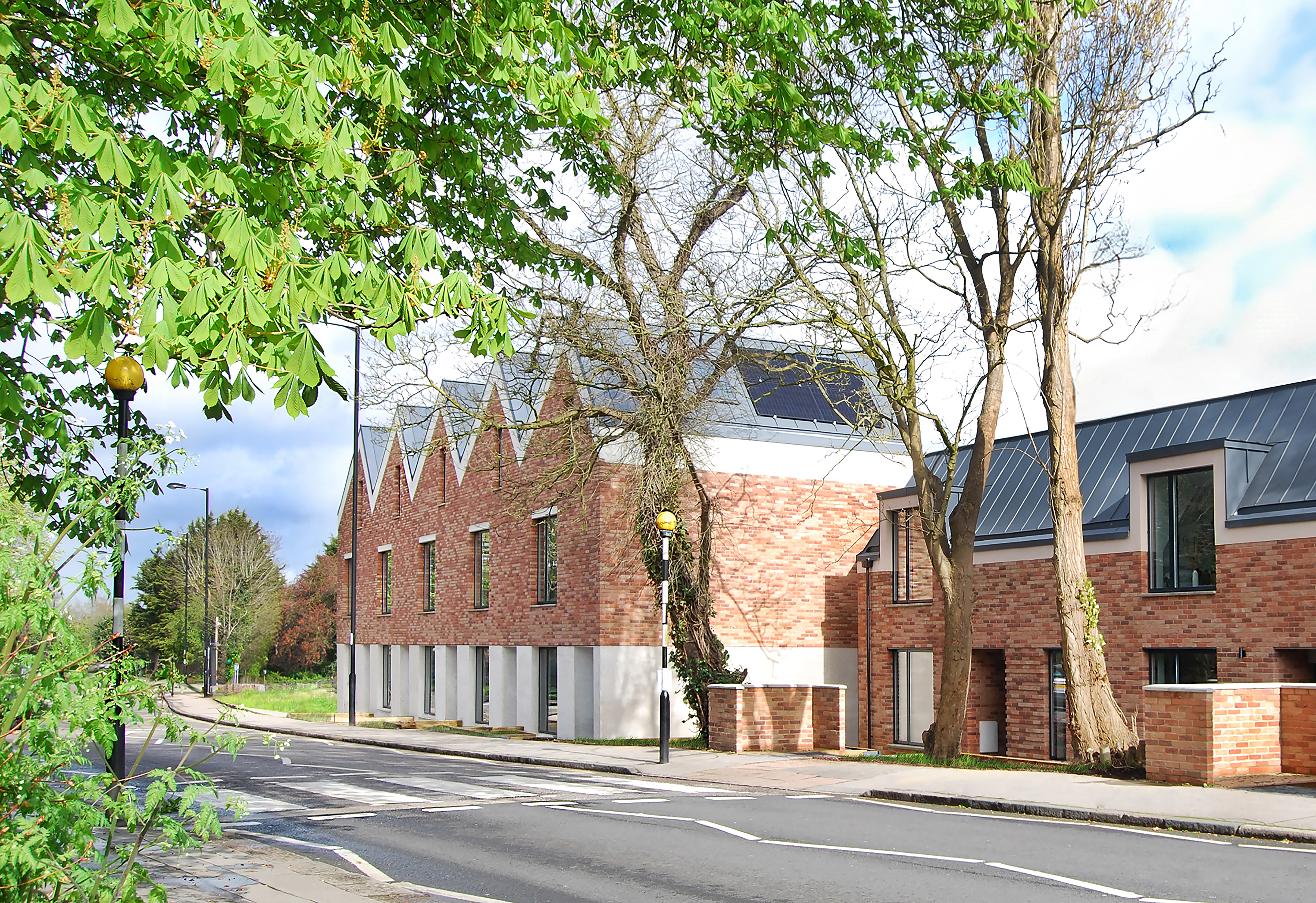 Hermitage Mews is a net-zero family of homes in London’s Crystal Palace
Hermitage Mews is a net-zero family of homes in London’s Crystal PalaceHermitage Mews by Gbolade Design Studio is a sustainable residential complex in south London's Crystal Palace, conceived to be green and contextual
By Ellie Stathaki
-
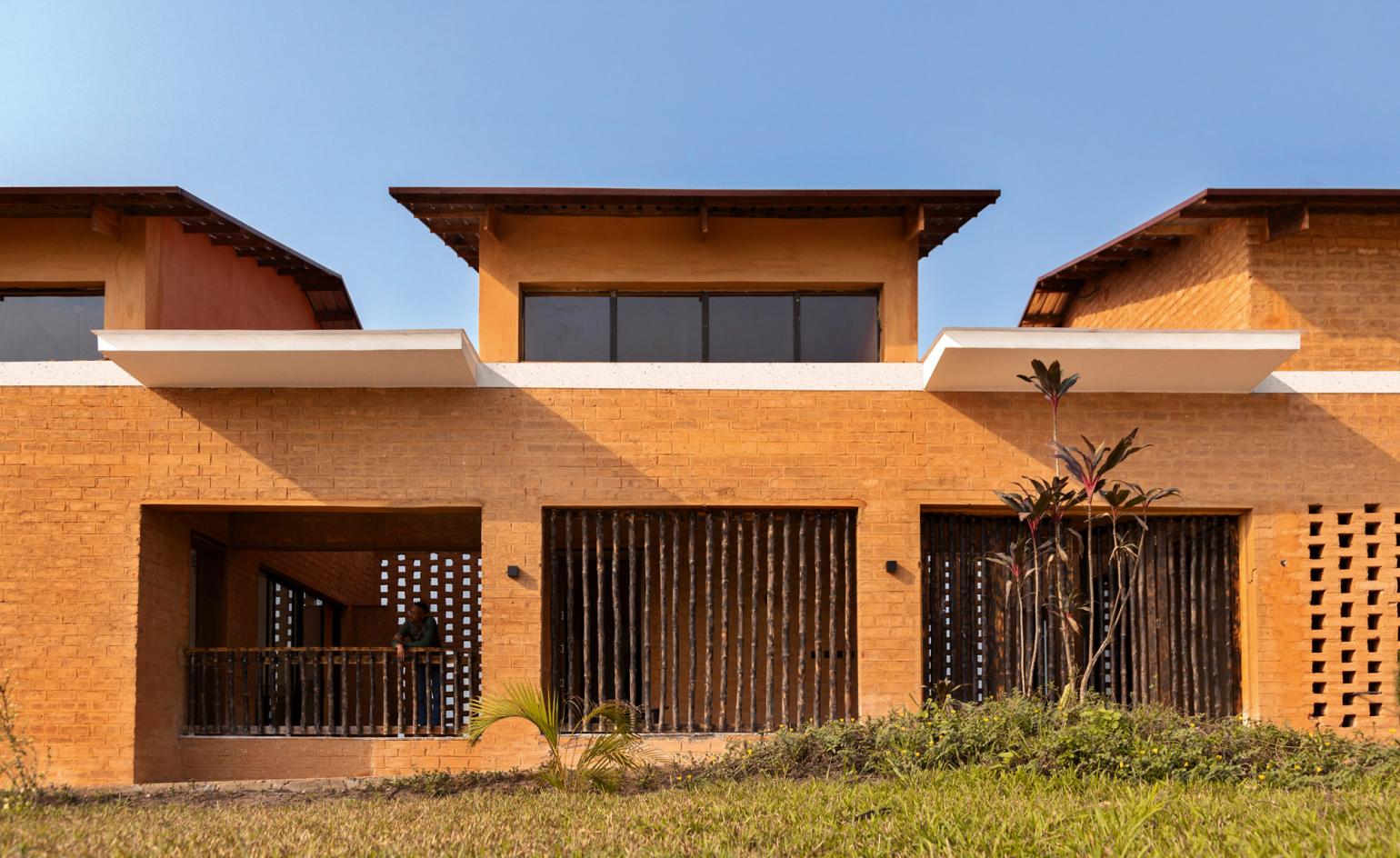 Sustainable architecture: 46 innovative and inspiring building designs
Sustainable architecture: 46 innovative and inspiring building designsThis is sustainable architecture at its best: from amazing abodes to centres of care and hard-working offices, these buildings not only look good but also do good
By Ellie Stathaki
-
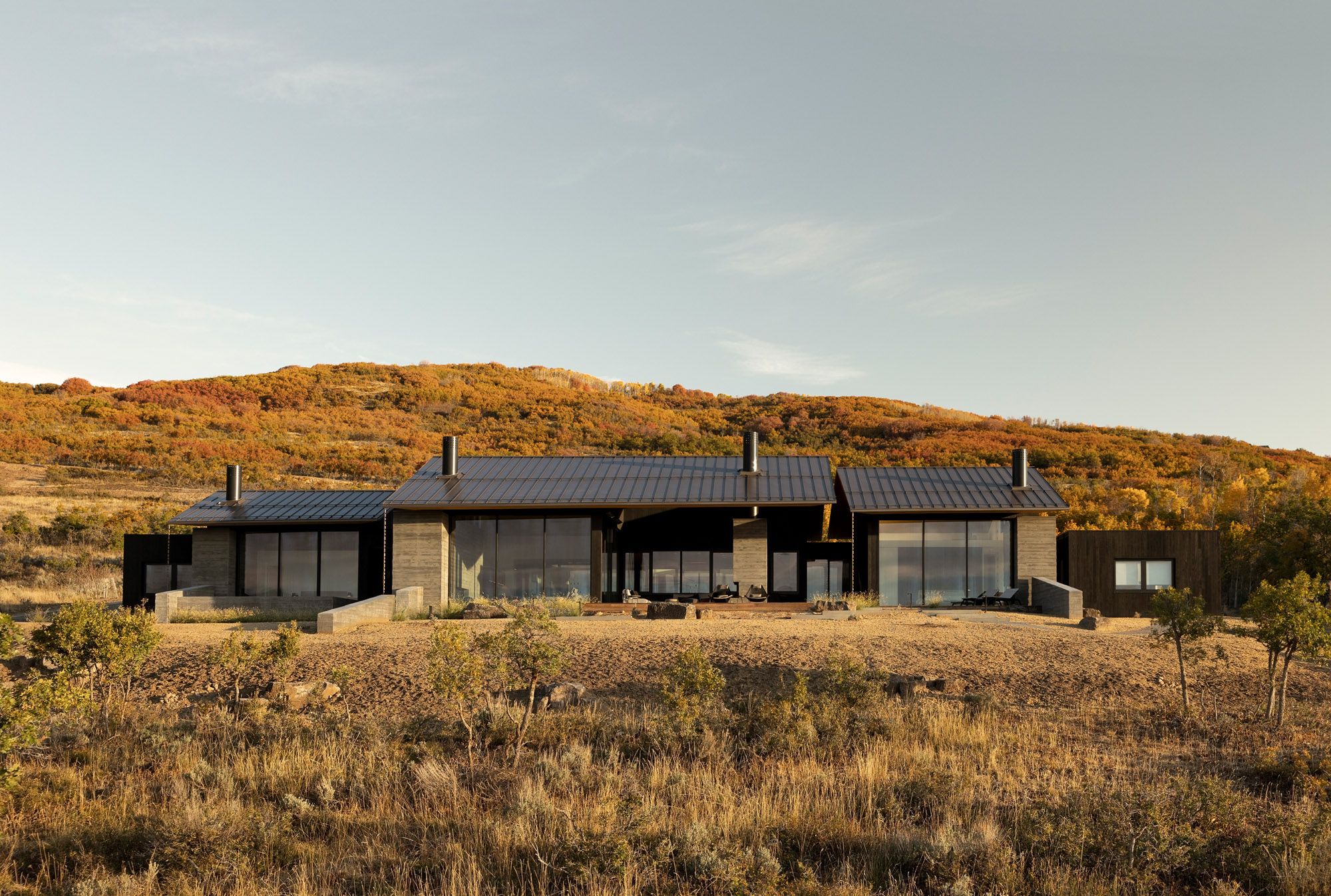 Slot House sets a high bar for sustainable architecture in Utah
Slot House sets a high bar for sustainable architecture in UtahSlot House, an energy-efficient mountain retreat in Utah, by local practice Klima Architecture, sets the bar high
By Eva Hagberg
-
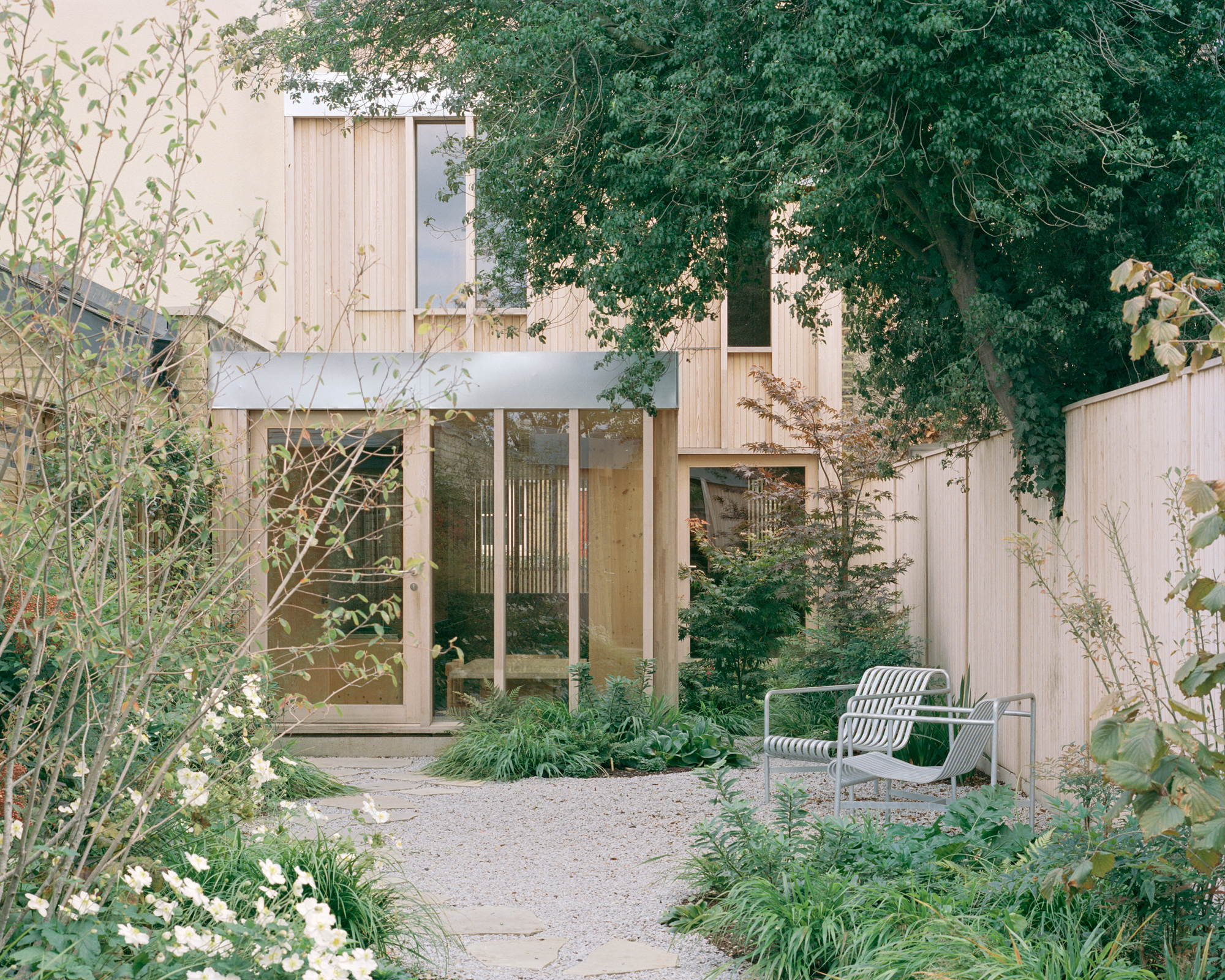 Spruce house offers a minimalist take on sustainable architecture
Spruce house offers a minimalist take on sustainable architectureSpruce House, London practice Ao-ft’s debut project, is a carefully crafted timber house that perfectly slots into its urban landscape
By Ellie Stathaki
-
 Material Cultures workshops support shift towards sustainable building practices
Material Cultures workshops support shift towards sustainable building practicesMaterial Cultures workshops explore new approaches to promote sustainability in the construction industry
By Ellie Stathaki
-
 London's Exchange House gets a sustainable revamp
London's Exchange House gets a sustainable revampLondon's iconic Exchange House in Broadgate has been transformed for the 21st century by Piercy&Company
By Nana Ama Owusu-Ansah